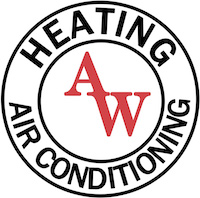Once the weather begins to cool off, you might be wondering about how you’ll make the most of your heating and cooling. After all, HVAC bills can add up to a significant portion of your monthly electric bill. To try and find ways to save, some homeowners look closer at their thermostat. Is there a setting they could use to boost efficiency?
The bulk of thermostats come with a ‘Fan’ or ‘Fan On’ setting. But if the fan is on during a typical cycle, what can the fan setting provide for your HVAC system? This guide should help. We’ll walk through just what the fan setting is and whether you can use it to reduce costs during the summer or winter.
Should I Use My Thermostat’s Fan Setting?
For most thermostats, the fan setting means that the system’s blower fan remains on. Some furnaces may continue to generate heat at a low level in this setting, but in most cases heating or cooling isn’t being produced. The ‘Auto’ setting, conversely, will turn on the fan over a heating or cooling cycle and turn it off once the cycle is over.
There are advantages and disadvantages to using the fan setting on your thermostat, and the ideal option {will|can|should]] depend on your personal comfort preferences.
Advantages to trying the Fan/On setting:
- You can keep the temperature in each room more consistent by enabling the fan to keep running.
- Indoor air quality can increase as constant airflow will keep passing airborne contaminants through the air filter.
- A smaller number of start-stop cycles for the system’s fan helps expand its life span. As the air handler is often a component of the furnace, this means you could prevent the need for furnace repair.
Drawbacks to switching to the Fan/On setting:
- A nonstop fan will likely increase your energy bills by a small margin.
- Continuous airflow can clog your air filter soon, increasing the frequency you will want to replace it.
{Choosing Between|Should My Thermostat Be on|Which Setting for My Thermostat? Fan or Auto in Each Season
During the summer, warm air may stick around in unfinished spaces such as the attic or an attached garage. If you use the fan setting, your HVAC system might gradually move this warm air into the rest of your home, pushing the HVAC system to run longer to maintain the preferred temperature. In extreme heat, this may result in needing AC repair more regularly as wear and tear increases.
The opposite can happen over the winter. Cooler spaces like a basement will hold onto cooler air, which will eventually make its way into the rest of your home. Keeping the fan on will sometimes pump more cold air upward, increasing the amount of heating you need to stay warm.
If you’re still trying to determine if you should try the fan/on setting, keep in mind that every home and family’s comfort needs are not the same. Leaving the HVAC system’s fan on might work for you if:
Someone in your household deals with allergies. Allergies and other respiratory conditions can be tough on the family. Leaving the fan on can help to enhance indoor air quality, helping your family breathe easier.
Your home deals with hot and cold spots. Many homes wrestle with difficult hot and cold spots that quickly return to a temperature different from the rest of the house. The fan setting might help minimize these changes by consistently refreshing each room’s supply of air.


